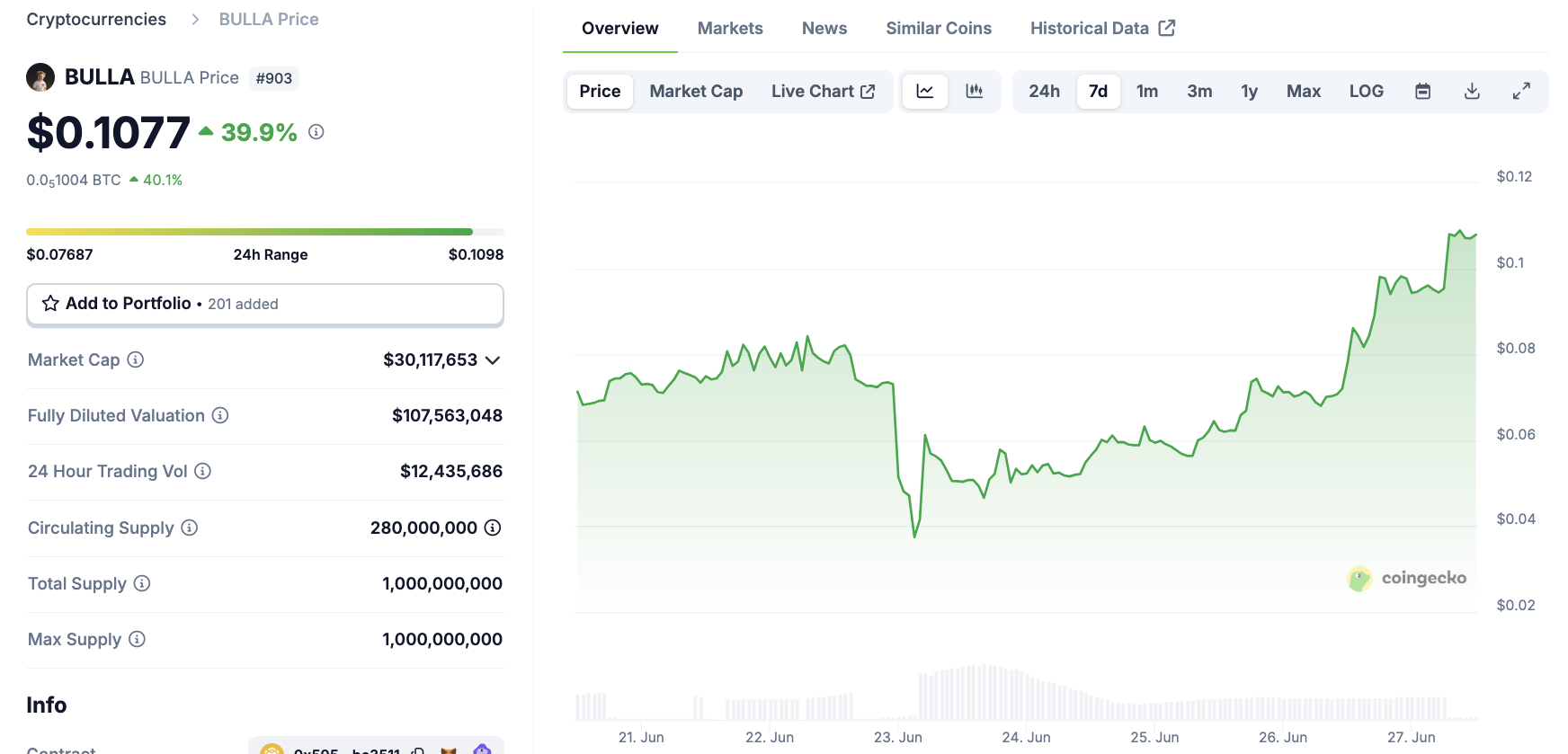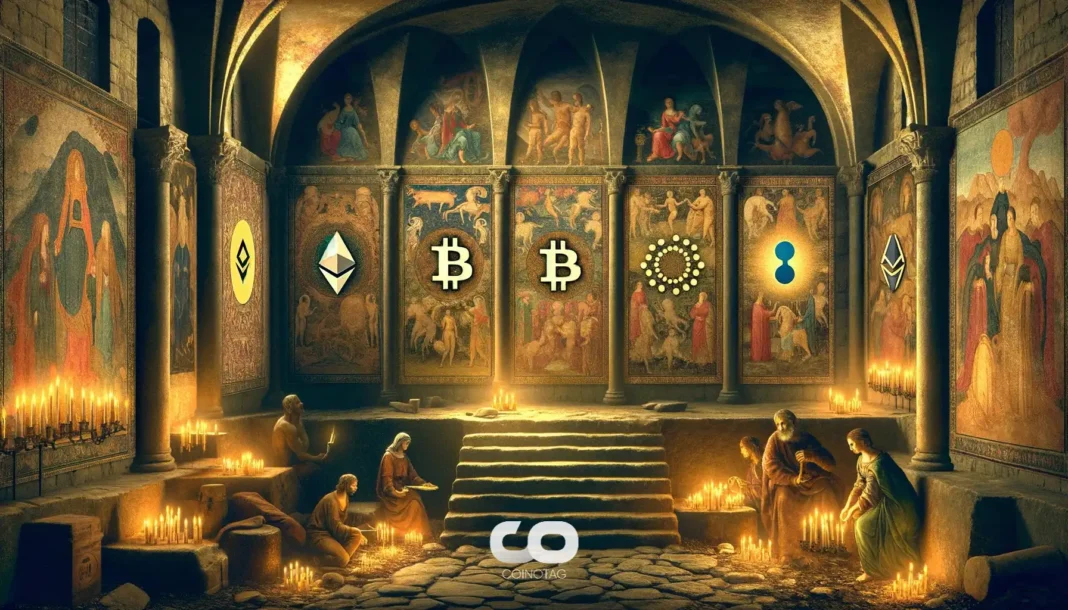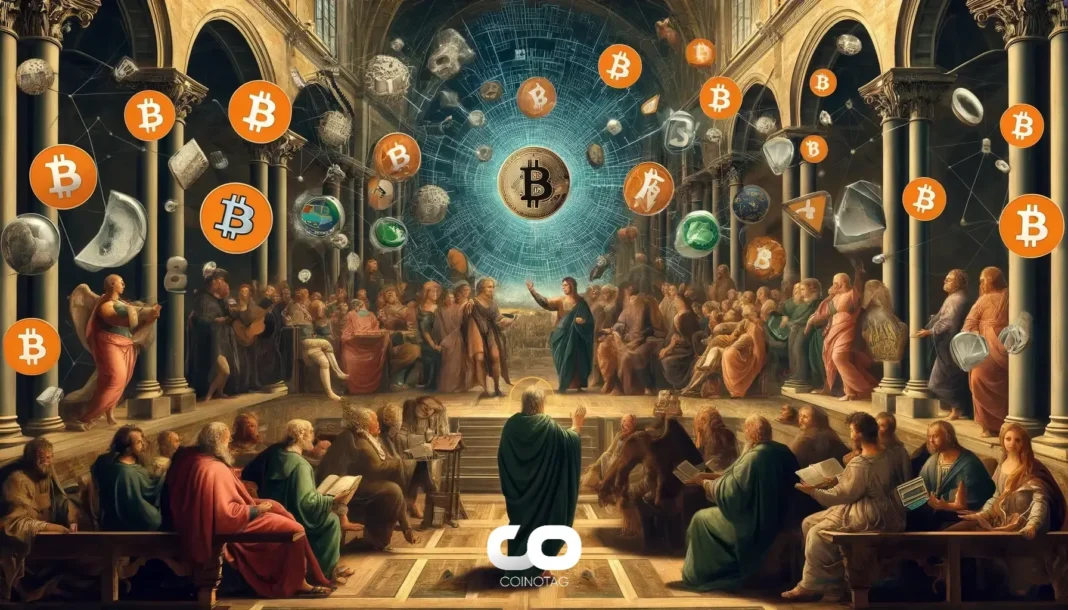-
Hasbulla’s BULLA token has experienced a remarkable 50% price surge, yet skepticism about its legitimacy continues to dominate the crypto community.
-
The token’s volatile price history, marked by sharp declines and recoveries, fuels ongoing debates about potential rug pull risks.
-
According to COINOTAG sources, while blockchain data does not conclusively indicate fraudulent activity, community distrust remains high due to Hasbulla’s controversial reputation.
BULLA token’s 50% surge sparks debate amid volatility and community skepticism, with no concrete evidence of a rug pull despite Hasbulla’s controversial history.
Understanding Hasbulla’s BULLA Token and Market Volatility
Hasbulla, a Russian crypto influencer known for launching meme coins, has once again stirred the market with his latest project, the BULLA token. Despite a strong initial market cap of $100 million at launch on June 8, the token quickly lost $70 million within five days, highlighting its extreme volatility. This pattern of rapid price fluctuations has led to widespread community suspicion, with many fearing a potential rug pull. However, the token’s listing on Binance Alpha and subsequent airdrop have added a layer of legitimacy, complicating the narrative.
Community Skepticism and Blockchain Analysis
The crypto community remains divided over BULLA’s authenticity. While blockchain analytics show no definitive signs of a scam, the token’s erratic price movements and Hasbulla’s previous involvement in controversial projects have fueled distrust. Analysts have pointed out that the sudden price drops following Binance Alpha’s endorsement suggest possible market manipulation, yet no concrete evidence has surfaced. Some speculate that entities like DWF Labs, known for their prior collaborations with Hasbulla and involvement in contentious activities, may be influencing BULLA’s price dynamics. Nevertheless, these claims remain unsubstantiated.
Impact of Binance Alpha Listing on BULLA’s Market Performance
The announcement of BULLA’s listing on Binance Alpha on June 22 significantly increased the token’s visibility and trading volume. This event was accompanied by a large-scale airdrop, which typically aims to incentivize user participation and boost liquidity. However, the immediate aftermath saw a 50% price decline, intensifying fears of a rug pull. Despite this, BULLA managed to recover and even posted a 40% gain shortly after, demonstrating resilience and continued investor interest.

Analyzing the Role of Influencers and Market Sentiment
Hasbulla’s personal promotion of the token has played a crucial role in sustaining market momentum despite skepticism. His active engagement and public boasting about BULLA’s gains have galvanized supporters, who continue to buy into the token. This dynamic underscores the influence of social sentiment in crypto markets, especially for meme coins. However, seasoned analysts caution that such enthusiasm can obscure underlying risks, and the absence of transparent evidence makes it difficult to assess the token’s long-term viability.
Conclusion
While BULLA’s recent price surge highlights its potential within the BNB ecosystem, the token’s history of volatility and Hasbulla’s controversial background maintain a cloud of uncertainty. The lack of concrete evidence supporting a rug pull suggests caution rather than outright dismissal. Investors should remain vigilant, closely monitoring blockchain data and market signals before making decisions. Ultimately, BULLA exemplifies the complexities of meme coin investments, where hype and skepticism coexist, demanding careful analysis and prudent risk management.







